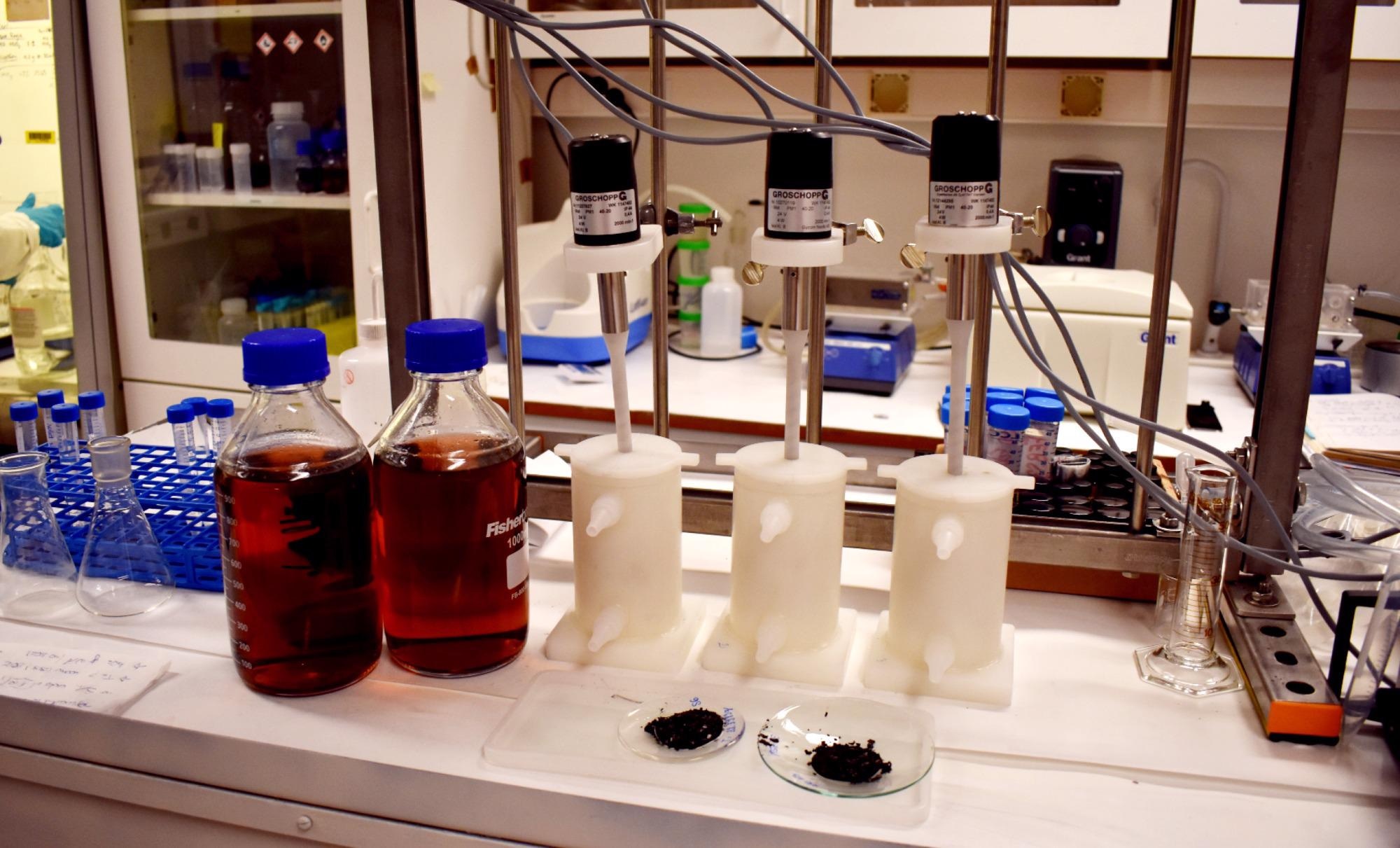According to a new scientific article published by the Chalmers University of Technology, Sweden, recycling electric car batteries could be affordable, simpler and more eco-friendly. This article outlines an improved recycling process.
 The lab setup for the leaching process with the final aqueous solutions containing recovered metals and solid residues containing graphite. Image Credit: Chalmers University of Technology.
The lab setup for the leaching process with the final aqueous solutions containing recovered metals and solid residues containing graphite. Image Credit: Chalmers University of Technology.
The study, published in the Waste Management journal, has been performed by a few of the world’s leading experts in the field and constitutes a crucial step towards the electromobility society of the future.
Since there is an increase in the use of electric vehicles (EVs), the processes of recycling and recovery for EV batteries and the crucial raw metals utilized in their production are turning out to be a highly significant area of research.
At present, one method that has gained a lot of interest is a combination of thermal pretreatment and hydrometallurgy, in which aqueous chemistry has been utilized to recover metals. Numerous companies are coming up with systems that will make use of this combination, but the scientists at the Chalmers University of Technology, Sweden, have found out that these companies use extensively varying temperatures and durations in their processes.
Also, the researchers emphasized the need for a comparative study to identify the optimal thermal treatment and hydrometallurgical process for recycling lithium-ion batteries.
30 Minutes and Room Temperature can Suffice
The new study’s main finding was that the hydrometallurgical process can be performed at room temperature. This is something that has not been tested earlier but can yield significant advantages in the form of decreased environmental impacts and lower charges for recycling the batteries. Also, the process can be performed considerably quicker compared to what was thought earlier.
Our research can make a huge difference for developers in this area. In some cases, it can be as much as reducing the temperature from between 60 and 80 °C, down to room temperature, and from several hours to just 30 minutes.
Burcak Ebin, Study Main Author and Researcher, Department for Chemistry and Chemical Engineering, Chalmers University of Technology
The scientists examined how the different steps — like thermal pretreatment and hydrometallurgy — are impacted by each other. A significant comparison was made between two different methods of thermal pre-treatment — pyrolysis or incineration. The latter lacks oxygen and is considered more eco-friendly, and the scientists identified that this provided the best results.
To meet the huge need for battery recycling that is coming, the processes currently in use must be made as effective and efficient as possible, so this study offers invaluable knowledge for the manufacturers and operators of this technology. The methods we present can also be used to optimize the recycling of all kinds of lithium-ion batteries.
Martina Petranikova, Associate Professor, Department of Chemistry and Chemical Engineering, Chalmers University of Technology
Petranikova has also worked with Northvolt, one of Europe’s biggest battery manufacturers, helping to develop and implement their recycling processes.
Continued Optimization Crucial for the Field
If recycling electric car batteries helps reach the volumes needed for the future, the charges must be essentially decreased. Hence, improving the processes is a critical challenge.
To reduce the costs, we need to cut the steps in the recycling process. We are working on several projects with that aim right now, and close collaborations and good communication between researchers and the developers of the technology will be extremely important for us to succeed with the challenges we face.
Martina Petranikova, Associate Professor, Department of Chemistry and Chemical Engineering, Chalmers University of Technology
An example of this is visible in relation to a new trend that has spread among the producers of EV batteries — solid state batteries. Such batteries contain considerably more different metals, thereby making recycling far more difficult.
Petranikova added, “As researchers, we see a vital need to agree on a global standard for a maximum number of metals in these batteries.”
Journal Reference:
Petranikova, M., et al. (2022) Recovery of critical metals from EV batteries via thermal treatment and leaching with sulfuric acid at ambient temperature. Waste Management. doi.org/10.1016/j.wasman.2021.11.030.
Source: https://www.chalmers.se/en/